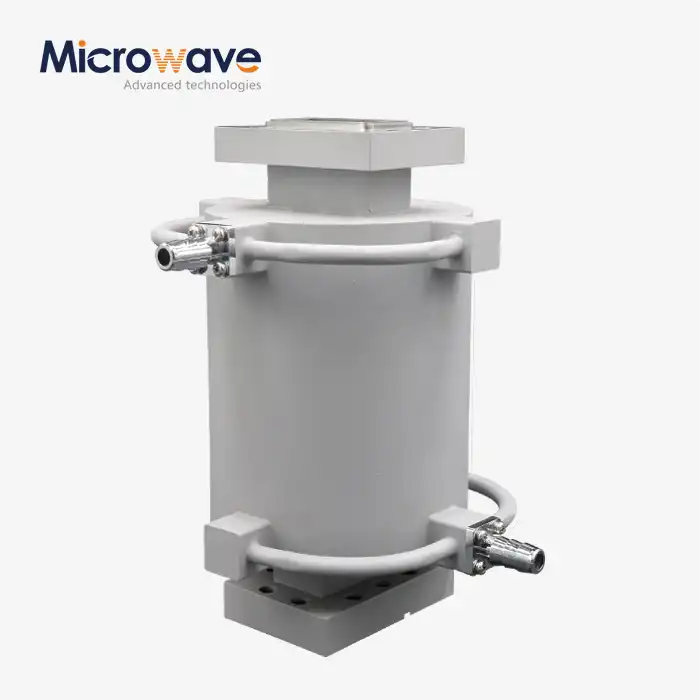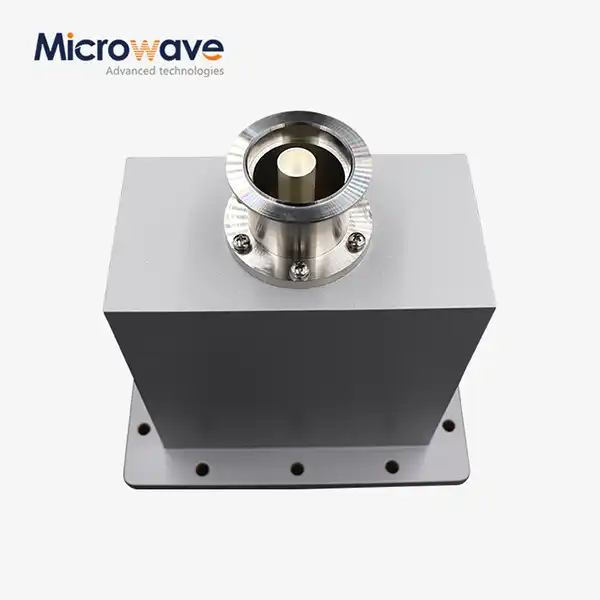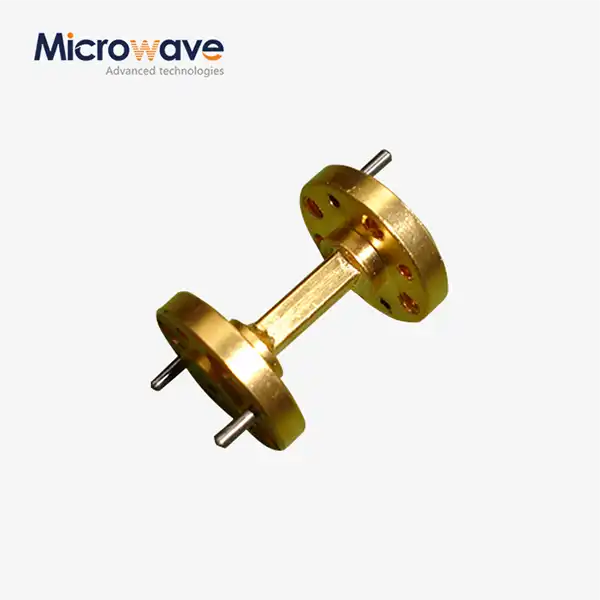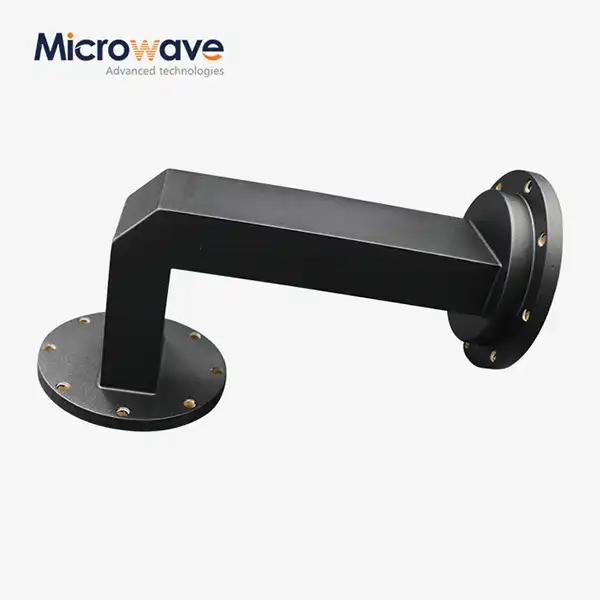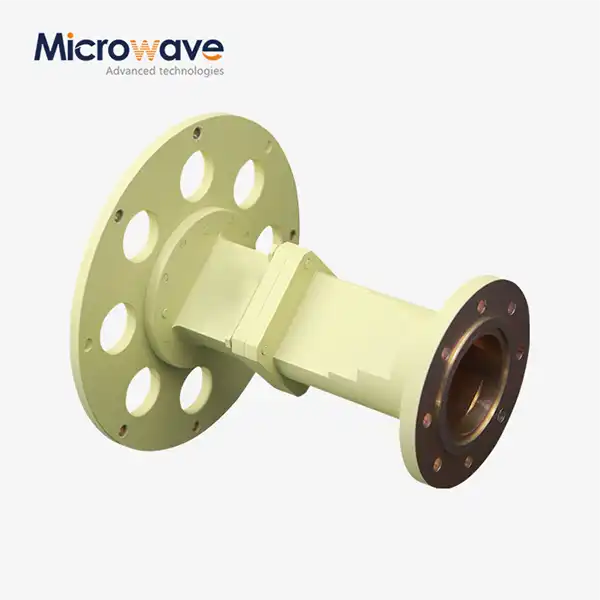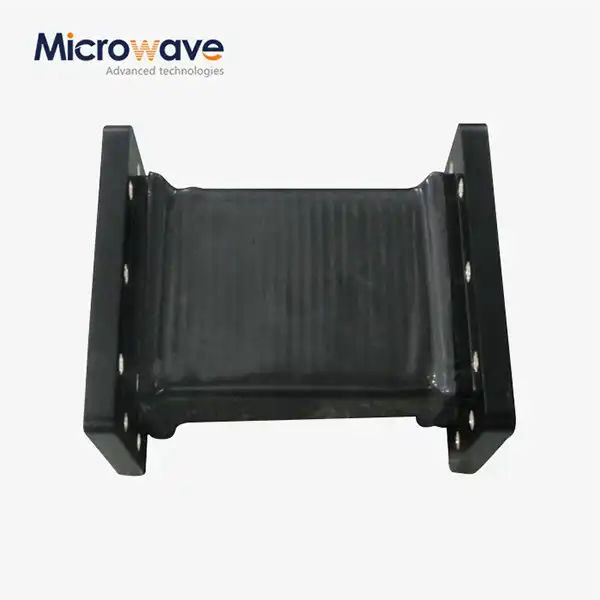Standard Horn Antenna: Maximize Your Calibration Accuracy in One Choice
Picture this: You're in the middle of a critical antenna measurement session, racing against deadlines, and your calibration reference antenna delivers inconsistent readings. Your entire test campaign grinds to a halt, costing time, money, and credibility. This nightmare scenario is exactly why engineers worldwide trust the Standard Horn Antenna as their go-to calibration solution. With its predictable radiation patterns, stable gain characteristics, and proven reliability across frequency ranges from 1 GHz to 110 GHz, the Standard Horn Antenna eliminates measurement uncertainty and delivers repeatable results every single time. Whether you're calibrating satellite ground station equipment, validating radar system performance, or conducting precision electromagnetic compatibility testing, choosing the right Standard Horn Antenna means the difference between compromised data and measurements you can stake your reputation on.
Why Standard Horn Antennas Are Essential for Precision Calibration?
The Standard Horn Antenna has earned its reputation as the industry gold standard for antenna calibration due to its fundamental design principles and measurable performance characteristics. Unlike other antenna types that may exhibit gain variations or unpredictable radiation patterns, the Standard Horn Antenna provides engineers with a reference tool they can trust implicitly. Its flared waveguide structure creates a controlled impedance transition from the confined waveguide environment to free space, resulting in minimal reflections and exceptional VSWR performance typically at or below 1.5:1 across the entire operating bandwidth. In laboratory environments where measurement accuracy directly impacts product development timelines and compliance certification, the Standard Horn Antenna serves as the cornerstone of reliable testing infrastructure. Research institutions and commercial testing facilities alike depend on these antennas because their gain values remain stable and predictable across temperature variations and environmental conditions. When a calibration certificate states a Standard Horn Antenna delivers 15 dB gain at 10 GHz, engineers can confidently use that figure in their measurement calculations without second-guessing the reference standard. This reliability stems from decades of refined design methodology and manufacturing precision that ensures each Standard Horn Antenna meets stringent dimensional tolerances. The antenna's broadband characteristics further enhance its value proposition for calibration applications. Rather than requiring multiple reference antennas for different frequency bands, a single Standard Horn Antenna can cover an entire waveguide band, simplifying test setups and reducing equipment investment. For instance, an X-band Standard Horn Antenna operating from 8.2 to 12.4 GHz enables comprehensive testing across this critical frequency range used in satellite communications, weather radar, and military applications. The consistent performance across this bandwidth means engineers don't need to interpolate between calibration points or switch reference antennas mid-measurement, streamlining workflows and eliminating potential sources of error.
Overcoming Common Calibration Challenges with Standard Horn Antennas
Every measurement engineer has encountered the frustration of unreliable calibration tools that introduce more uncertainty than they resolve. Standard Horn Antennas directly address these pain points through their inherent design advantages and manufacturing quality. The antenna's directional characteristics concentrate radiated energy into a well-defined beam, reducing the impact of environmental reflections and multipath interference that can corrupt measurements in less-than-ideal test environments. This focused radiation pattern means that even when perfect anechoic chamber conditions aren't available, the Standard Horn Antenna still delivers usable calibration data with acceptable accuracy. Temperature stability represents another critical advantage that separates Standard Horn Antennas from alternative calibration solutions. Constructed from high-quality aluminum alloy or brass with precisely controlled thermal expansion coefficients, these antennas maintain their dimensional accuracy and electrical performance across wide temperature ranges. While some antenna types may experience gain variations of 0.5 dB or more with temperature swings, properly designed Standard Horn Antennas exhibit minimal performance drift, typically less than 0.1 dB across normal laboratory temperature variations. This thermal stability proves invaluable during extended measurement campaigns or when conducting outdoor testing where environmental control is limited.
The mechanical robustness of Standard Horn Antennas also contributes significantly to their reliability as calibration references. Unlike delicate antenna structures that may suffer permanent deformation from minor impacts or rough handling, the Standard Horn Antenna's solid metallic construction withstands the rigors of laboratory use and field deployment. The corrosion-resistant coatings applied to these antennas protect against oxidation and environmental degradation, ensuring that performance characteristics remain stable over years of service. When you invest in a quality Standard Horn Antenna from a reputable manufacturer like Advanced Microwave Technologies Co., Ltd., you're acquiring a calibration asset that will deliver consistent results throughout its operational lifetime, providing excellent long-term value compared to calibration standards that require frequent replacement or recertification.

Technical Specifications That Define Standard Horn Antenna Performance
Understanding the technical parameters that characterize Standard Horn Antenna performance empowers engineers to select the optimal antenna for their specific calibration requirements. The frequency range specification defines the operational bandwidth across which the antenna maintains its specified performance characteristics. Advanced Microwave Technologies Co., Ltd. manufactures Standard Horn Antennas covering the complete spectrum from 1 GHz through 110 GHz, enabling calibration solutions for virtually any microwave or millimeter-wave application. This comprehensive frequency coverage spans multiple waveguide bands, including popular standards like WR-90 for X-band, WR-62 for Ku-band, and WR-28 for Ka-band applications. Gain specifications represent perhaps the most critical parameter for calibration applications, as this value directly influences measurement accuracy when using the antenna as a reference standard. Standard Horn Antennas are available with nominal gain values of 10 dB, 15 dB, 20 dB, and 25 dB, with the specific gain depending on the antenna's physical dimensions and operating frequency. The gain calibration data provided with each antenna includes measured values at multiple frequency points across the operating band, allowing engineers to interpolate precise gain figures for their specific test frequencies. This detailed calibration information distinguishes professional-grade Standard Horn Antennas from lower-quality alternatives that may provide only nominal gain specifications without supporting measurement data.
VSWR performance indicates how well the Standard Horn Antenna is matched to the transmission line feeding it, with lower VSWR values representing better impedance matching and reduced reflections. High-quality Standard Horn Antennas achieve VSWR values of 1.25:1 or better for waveguide input configurations and 1.5:1 or better for coaxial input designs. These excellent matching characteristics ensure that signal power efficiently transfers from the source into the antenna structure and radiates into space, rather than reflecting back toward the generator where it could cause measurement errors or damage sensitive equipment. The superior VSWR performance of Standard Horn Antennas contributes directly to measurement repeatability and accuracy by minimizing the influence of transmission line effects on calibration results.
Material Selection and Construction Quality
The materials and manufacturing processes used to produce Standard Horn Antennas significantly impact their long-term reliability and measurement performance. Premium antennas utilize high-purity aluminum alloy or brass stock that has been carefully selected for its electrical conductivity, mechanical stability, and corrosion resistance. The flared horn structure is typically machined from solid metal billet using precision CNC equipment, ensuring dimensional accuracy within tolerances of a few micrometers. This machining precision is essential because even small deviations in horn dimensions can alter the radiation pattern and gain characteristics, potentially compromising the antenna's value as a calibration reference. Surface finish quality also plays a crucial role in Standard Horn Antenna performance, particularly at higher frequencies where skin depth effects concentrate current flow in the outer layers of the conductor. Advanced Microwave Technologies Co., Ltd. applies specialized corrosion-resistant coatings to their Standard Horn Antennas that protect the base metal without significantly impacting electrical performance. These coatings resist oxidation, salt spray, and other environmental factors that could degrade antenna performance over time, making the antennas suitable for both controlled laboratory environments and more challenging field deployment scenarios. The connector interface represents another critical construction element that affects overall system performance. Standard Horn Antennas are available with various connector types including waveguide flanges conforming to international standards, as well as coaxial connectors like SMA and N-type for applications requiring convenient integration with coaxial test equipment. The connector attachment must provide excellent electrical continuity while maintaining mechanical stability to prevent movement that could alter calibration reference planes. High-quality Standard Horn Antennas feature precision-machined flange interfaces with tight flatness tolerances that ensure repeatable mating with minimal insertion loss variation between connection cycles.
Application-Specific Advantages of Standard Horn Antennas
Satellite communication systems represent one of the most demanding applications for Standard Horn Antennas, where calibration accuracy directly impacts link budget calculations and system performance predictions. Ground station antenna calibration requires reference standards that can operate reliably at the specific frequencies used for satellite uplink and downlink transmissions. Standard Horn Antennas designed for C-band, X-band, Ku-band, and Ka-band satellite applications provide the stable gain references needed to characterize earth station antenna performance, verify pointing accuracy, and validate antenna tracking systems. The predictable radiation patterns of Standard Horn Antennas enable engineers to conduct precise gain transfer measurements, where the known gain of the horn antenna establishes a reference baseline for determining the unknown gain of the satellite dish under test.In aerospace and defense applications, Standard Horn Antennas serve critical roles in radar system development, testing, and maintenance. Modern phased array radar systems require careful calibration of individual array elements to achieve the desired beam pattern and sidelobe suppression characteristics. Engineers use Standard Horn Antennas as controlled illumination sources during array calibration procedures, providing known signal levels at specific angles to verify element phase alignment and amplitude distribution. The directional characteristics of Standard Horn Antennas prove particularly valuable in these scenarios because they allow selective illumination of array aperture sections while minimizing spillover energy that could corrupt calibration measurements. Military surveillance radar systems depend on this calibration accuracy to achieve the target detection range and angular resolution specifications required for mission success.
Telecommunication infrastructure development increasingly relies on Standard Horn Antennas as 5G networks expand into millimeter-wave frequency bands. Base station antenna manufacturers use these precision calibration tools to verify the radiation patterns, gain characteristics, and beam steering accuracy of their products before deployment. The broad frequency coverage capability of Standard Horn Antennas makes them ideal for testing multiband antenna systems that operate across multiple 5G frequency allocations. Additionally, as the telecommunications industry begins exploring 6G technology operating at frequencies approaching 110 GHz, Standard Horn Antennas will continue serving as essential calibration references for antenna development and system testing at these cutting-edge frequency ranges.
Electromagnetic Compatibility Testing and Standards Compliance
Electromagnetic compatibility testing represents another critical application domain where Standard Horn Antennas demonstrate their value as precision measurement tools. EMC test laboratories use these antennas to generate controlled electromagnetic field strengths for radiated immunity testing and to receive radiated emissions from devices under test. The stable gain characteristics and predictable radiation patterns of Standard Horn Antennas enable test engineers to establish calibrated field strengths with known accuracy, ensuring that test results are traceable to national measurement standards and satisfy regulatory compliance requirements. When conducting radiated emissions measurements per standards like CISPR 16 or FCC Part 15, engineers must accurately quantify the electromagnetic field strength produced by electronic equipment at specific distances and frequencies. Standard Horn Antennas serve as the receiving antenna in these measurements, with their calibrated gain values allowing precise calculation of the device's radiated power from the received signal level. The antenna's directional characteristics help isolate the device under test from background RF noise and other potential interference sources that could compromise measurement validity. This combination of gain accuracy and directional selectivity makes Standard Horn Antennas the preferred choice for critical compliance testing where measurement uncertainty must be minimized to avoid costly product failures or regulatory issues. Academic research institutions leverage Standard Horn Antennas extensively in electromagnetics laboratories where students and researchers conduct experiments in antenna theory, wave propagation, and wireless communication systems. The availability of Standard Horn Antennas with well-documented performance characteristics allows researchers to establish controlled experimental conditions with known source characteristics. This enables meaningful comparison between theoretical predictions and measured results, advancing understanding of electromagnetic phenomena and facilitating development of innovative antenna designs and signal processing techniques.
Advanced Microwave Technologies Co., Ltd.: Your Partner for Premium Standard Horn Antennas
Selecting the right supplier for Standard Horn Antennas requires careful evaluation of technical capabilities, manufacturing quality, and customer support infrastructure. Advanced Microwave Technologies Co., Ltd. has established itself as a leading global provider through over 20 years of specialized experience in microwave component manufacturing. The company's state-of-the-art 24-meter microwave darkroom facility enables comprehensive antenna characterization across the complete frequency range from 0.5 GHz to 110 GHz. This advanced testing capability ensures that every Standard Horn Antenna shipped to customers has been thoroughly verified against its specifications using calibrated measurement equipment traceable to international standards. The company's ISO 9001:2015 certification demonstrates commitment to rigorous quality management systems that control every aspect of Standard Horn Antenna production, from initial design through final testing and delivery. This systematic approach to quality assurance minimizes manufacturing variability and ensures consistent product performance that customers can depend on for critical calibration applications. Additionally, ISO 14001:2015 environmental management certification reflects the company's dedication to sustainable manufacturing practices that minimize ecological impact while maintaining production efficiency. Advanced Microwave Technologies Co., Ltd. recognizes that standard catalog products don't always meet every customer's unique requirements. The company's OEM services enable customization of Standard Horn Antenna specifications including specialized frequency ranges, custom gain values, alternative connector types, and enhanced environmental protection coatings. The technical team works closely with customers to understand their specific application requirements and design solutions that optimize performance for their particular use cases. This flexibility proves invaluable for customers developing specialized measurement systems, conducting research at non-standard frequencies, or operating in challenging environmental conditions that demand enhanced antenna durability.
Comprehensive Technical Support and Rapid Delivery
Beyond manufacturing excellence, Advanced Microwave Technologies Co., Ltd. differentiates itself through comprehensive technical support that helps customers maximize the value of their Standard Horn Antenna investments. The company's engineering team provides expert guidance on antenna selection, integration considerations, and measurement techniques that ensure optimal performance in customers' specific applications. Whether you're establishing a new calibration laboratory, upgrading existing test equipment, or troubleshooting measurement anomalies, the technical support team brings decades of combined experience to help resolve challenges and achieve accurate, repeatable results. Delivery speed represents another critical advantage for customers facing urgent project deadlines or unexpected equipment failures. Advanced Microwave Technologies Co., Ltd. maintains strategic inventory of popular Standard Horn Antenna models to enable rapid order fulfillment for standard configurations. For custom designs, the company's streamlined manufacturing processes and efficient supply chain management minimize lead times without compromising quality standards. This combination of standard product availability and rapid custom manufacturing capability ensures that customers can obtain the Standard Horn Antennas they need when they need them, avoiding costly project delays or extended equipment downtime. The company's global export capabilities and established international logistics partnerships facilitate reliable delivery to customers worldwide. Whether you're located in North America, Europe, Asia, or anywhere else globally, Advanced Microwave Technologies Co., Ltd. can efficiently ship Standard Horn Antennas with appropriate export documentation and customs compliance. This international reach, combined with competitive pricing enabled by efficient manufacturing operations, makes the company an attractive partner for customers seeking premium Standard Horn Antennas without the premium pricing often associated with high-quality calibration equipment.
Conclusion
Standard Horn Antennas represent the cornerstone of reliable antenna calibration, delivering predictable performance, stable gain characteristics, and exceptional measurement repeatability across frequencies from 1 GHz to 110 GHz. Their proven value in satellite communications, aerospace and defense, telecommunications infrastructure, and electromagnetic compatibility testing makes them an indispensable tool for engineers worldwide who demand measurement accuracy they can trust.
Cooperate with Advanced Microwave Technologies Co., Ltd.
Ready to elevate your calibration capabilities with premium Standard Horn Antennas? Advanced Microwave Technologies Co., Ltd., a leading China Standard Horn Antenna factory, China Standard Horn Antenna supplier, and China Standard Horn Antenna manufacturer, offers comprehensive China Standard Horn Antenna wholesale solutions. Discover competitive Standard Horn Antenna prices on our High Quality Standard Horn Antenna product line, all Standard Horn Antenna for sale with complete calibration data. Our ISO-certified manufacturing, backed by over 20 years of microwave expertise and a state-of-the-art 24m testing darkroom covering 0.5-110 GHz, ensures every antenna meets stringent performance standards. We provide custom OEM services, rapid prototyping, and expert technical consultation to match your exact specifications. Contact our engineering team today at craig@admicrowave.com to discuss your Standard Horn Antenna requirements and receive a detailed quotation tailored to your application. Save this page for convenient future reference to our complete Standard Horn Antenna solutions.
References
1. Braun, E. H., "Some Data for the Design of Electromagnetic Horns," IRE Transactions on Antennas and Propagation, vol. AP-4, no. 1, pp. 29-31, January 1956.
2. Razmhosseini, M., Smith, J. K., and Chen, L., "On the Accuracy of Standard Gain Horn Measurement," IEEE International Symposium on Antenna Technology and Applied Electromagnetics, March 2020.
3. Parini, C. G. and Gregson, S. F., "Modern Antenna Measurements: Theory and Practice," Institution of Engineering and Technology, London, 2018.
4. Sierra-Castaner, M., et al., "Facility Comparison and Evaluation Using Dual Ridge Horns," Proceedings of the 3rd European Conference on Antennas and Propagation, Berlin, Germany, 2009.




